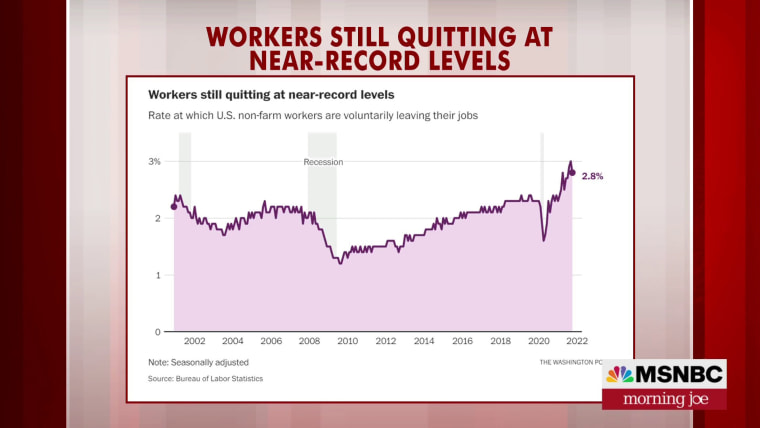The Congressional Progressive Caucus, the biggest bloc of liberal lawmakers in Congress, on Dec. 7 endorsed a bold bill proposed by Rep. Mark Takano, D-Calif., which would seek to implement a four-day workweek. It’s a measure that has no real prospect of becoming law in the near term, but it’s a compelling idea that’s garnering more attention worldwide — and it could serve as a potential point of focus for the American left in the future.
Shorter workweeks should be viewed as a human rights imperative.
Shortening working hours has been a major point of focus for workers, both organized and unorganized, around the world for centuries. In the U.S. and Europe in the 19th century, wage workers often worked six or 6½ days a week, and could endure brutal labor for 100 hours over the course of a week. In the early 20th century, the American organized labor movement successfully lobbied for an eight-hour workday, or a 40-hour workweek, based on the principle that workers deserve to divide their 24-hour days equally among rest, work and leisure.
But since then, efforts to shorten how much Americans work have largely stalled, work hours have crept up, and the U.S. has fallen behind peer countries. Americans work far, far more than people in most other affluent countries; from over here, France’s 35-hour workweek can seem like a ludicrous fantasy. And while Americans have zero legally guaranteed paid vacation days, many European countries require employers to provide their workers with several weeks of paid time off — Austria, for example, mandates 25 paid workdays off and 13 paid holidays every year.

"People are spending more time at work, less time with loved ones, their health and well-being is worsening, and their pay has remained stagnant. It's time for change," Takano said in a statement about his bill. He has framed the legislation as an opportunity to recalibrate work-life balance amid a broader reconsideration of how Americans work — and have been exploited — during the pandemic.
If it’s enacted, the bill wouldn’t actually put a ceiling on how many days someone could work in week. Rather, it would require that employers pay overtime — time and a half — after 32 hours of labor. It wouldn’t include certain kinds of workers, like gig workers and salaried employees exempt from overtime. But it would cover the majority of American workers, Dean Baker, a senior economist at the Center for Economic and Policy Research, told me, and would also have the power to reshape norms for salaried workers who aren’t eligible for overtime.
If it’s enacted, the bill wouldn’t actually put a ceiling on how many days someone could work in week. Rather, it would require that employers pay overtime — time and a half — after 32 hours of labor.
The idea is that the policy would nudge businesses — and employees — to rethink work in the form of fewer hours or more efficiency in the workday, or some blend of the two. Baker said that when France reduced its workweek — which also worked by reducing the hours before overtime kicked in — it was expected that it would provide new jobs for workers to take up the work that wouldn’t get done in a shorter week. Instead, it mainly caused a “substantial” boost in productivity. “Employers figured, OK, I don’t want to pay the [overtime] wage premium, so I’m going to figure out how to restructure my workplace so I can get more work per hour out of workers,” Baker said.
When I asked Baker whether such a law would destabilize the U.S. economy, especially businesses with slim profit margins, he said he believed that while some businesses would be pushed over the edge, “you’ll see the vast majority of businesses adjust to it,” particularly if it is phased in.

The four-day workweek has become a subject of increasing fascination around the world in recent years — and experiments with it tend to look promising. Researchers who oversaw a study of 2,500 Icelandic workers conducted over several years described trials with a four-day workweek with no cuts in pay as a “resounding success.” The report on the study said workers’ well-being “dramatically increased,” while “productivity and service provision remained the same or improved across the majority of trial workplaces.”
Simultaneous boosts in well-being and productivity have also been reported at companies in the U.S., New Zealand and Japan. Businesses that have had success with the model have reported using strategies to streamline the work day by doing things like reducing meetings and blocking out time for uninterrupted work. It also seems to help that employees also are able to attend to personal business outside of work hours with the spare time, making any given day more focused. Governments are taking increasing interest in the matter as well — Spain and Scotland, for example, are planning four-day workweek trials by subsidizing employers who give workers an extra day off.
These experiments are worth watching closely. Shorter workweeks should be viewed as a human rights imperative — a way to ensure that every person is guaranteed a meaningful amount of free time to rest, to play, to reflect, to organize and build power, to pray, to wander. Or to do something else entirely: whatever they want.

